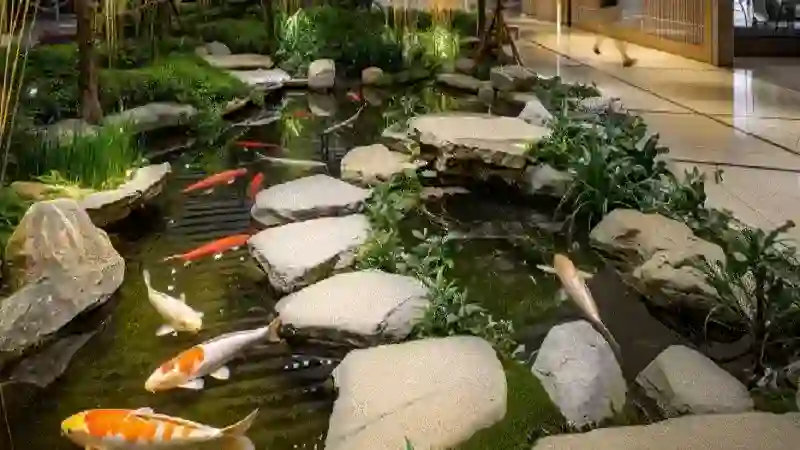A well-designed outdoor space does more than enhance the appearance of a property; it also provides comfort, function, and lasting value. When thoughtfully planned, a landscape becomes an extension of the home, blending aesthetics with usability. Many homeowners focus only on visual appeal, but the true art lies in balancing beauty with practicality. This guide explores the steps, strategies, and principles that make a landscape both functional and visually striking.
Understanding the Goals of Outdoor Spaces
Before beginning any project, it’s essential to define the purpose of the landscape. Ask yourself:
- Do you want a relaxing retreat with greenery and seating?
- Should the space accommodate gatherings or play areas?
- Are you aiming to increase curb appeal or property value?
By clarifying these objectives early on, you can create a cohesive plan that aligns with your lifestyle.
Core Principles of Effective Landscape Planning
Designing a landscape requires more than just choosing plants and placing them around. Successful planning is rooted in several principles:
1. Balance
Balance can be symmetrical, such as identical plants on both sides of a walkway, or asymmetrical, where different elements achieve harmony.
2. Proportion
Structures, plants, and pathways should be scaled appropriately to the size of the space.
3. Unity
All elements—plants, furniture, and hardscaping—should feel like parts of a single vision.
4. Rhythm and Flow
A consistent pattern in plantings or pathways can guide the eye and movement through the space.
Practical Aspects of Outdoor Design
Beauty alone is not enough; functionality must be considered from the start. Practicality ensures the space is comfortable and low-maintenance.
Accessibility
Pathways should be wide enough for movement, and entrances should be clear. Raised garden beds or seating areas can improve usability.
Durability
Choosing weather-resistant materials for furniture, stones, and wood ensures longevity.
Sustainability
Eco-friendly practices such as rainwater collection, native planting, and energy-efficient lighting enhance both function and environmental responsibility.
Choosing Plants for Function and Appeal
Plants are central to any landscape, but their selection must reflect both aesthetic desires and practical needs.
Shade and Cooling
Trees provide natural cooling, reducing the need for artificial energy consumption.
Privacy
Tall shrubs or hedges can act as natural fences, giving the space privacy without sacrificing beauty.
Color and Texture
Mixing flowering plants, grasses, and evergreens creates year-round appeal.
Low Maintenance Choices
Selecting drought-tolerant plants minimizes upkeep while maintaining visual charm.
Hardscaping: The Structural Foundation
Hardscaping refers to the non-plant elements of a design, and it often defines the functionality of a space.
-
Pathways: Direct movement and link areas of the yard.
-
Patios and Decks: Offer spaces for dining or relaxation.
-
Retaining Walls: Help manage sloped areas and prevent soil erosion.
-
Water Features: Fountains or ponds provide tranquility and visual interest.
By blending hardscape elements with greenery, you create a balanced environment where both structure and nature coexist.
Lighting for Safety and Atmosphere
Outdoor lighting serves two purposes: functionality and ambiance.
-
Path Lights: Prevent accidents by illuminating walkways.
-
Accent Lights: Highlight trees, sculptures, or water features.
-
String Lights or Lanterns: Create a warm and welcoming atmosphere for evening gatherings.
Well-placed lighting allows the outdoor area to be enjoyed both day and night.
Budgeting and Planning for Long-Term Use
A landscape project can be as simple or as elaborate as you want. However, careful planning ensures you get the most value.
Set Priorities: Decide which areas are most important—patios, gardens, or play spaces.
Phased Approach: Tackle large projects in stages rather than all at once.
Ongoing Maintenance: Account for seasonal care such as pruning, mulching, and cleaning.
Common Mistakes to Avoid
Even with careful planning, certain errors can undermine your efforts.
Overcrowding Plants: Leads to competition for nutrients and messy growth.
Ignoring Climate: Choosing plants unsuited for your region results in high failure rates.
Lack of Drainage: Poor water management causes flooding and root damage.
Forgetting Scale: Oversized elements can overwhelm small yards.
Avoiding these pitfalls ensures that both beauty and function are preserved.
Blending Beauty with Practicality: A Step-by-Step Example
To illustrate how form and function can merge, let’s imagine designing a mid-sized backyard:
Define Zones: Divide the yard into three areas—dining, relaxation, and gardening.
Hardscape First: Install a stone patio and a pathway leading to the garden.
Plant Selection: Place shade trees near the seating area, flowering shrubs along the fence, and herbs in raised beds.
Lighting: Add path lights and soft spotlights to highlight plants.
Decorative Elements: Include a small fountain for visual and auditory appeal.
The result is a landscape that is inviting, easy to maintain, and functional for daily living.
The Role of Professional Help
While many homeowners enjoy tackling projects themselves, larger or more complex designs may benefit from professional assistance. A landscape architect or designer brings expertise in plant selection, spatial planning, and technical requirements such as drainage. Even consulting for a few hours can save time and prevent costly mistakes.
Long-Term Maintenance Strategies
A well-planned landscape requires ongoing care to preserve its beauty and functionality. Some essential strategies include:
Regular Pruning: Keeps plants healthy and aesthetically pleasing.
Seasonal Updates: Adding flowers or adjusting décor according to the season refreshes the space.
Watering Systems: Drip irrigation or sprinklers save time and promote plant health.
Soil Care: Fertilizing and mulching maintain nutrients for long-term growth.
Conclusion
Mastering the art of landscape design involves more than creating a visually pleasing yard. It requires balancing beauty with practicality, ensuring the space serves both functional needs and aesthetic desires. By focusing on planning, plant selection, hardscaping, and long-term maintenance, homeowners can create outdoor areas that truly enhance their lives. Whether it’s a cozy retreat, an entertainment hub, or a sustainable garden, the key lies in uniting elegance with usability.

